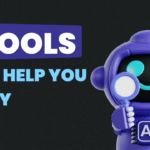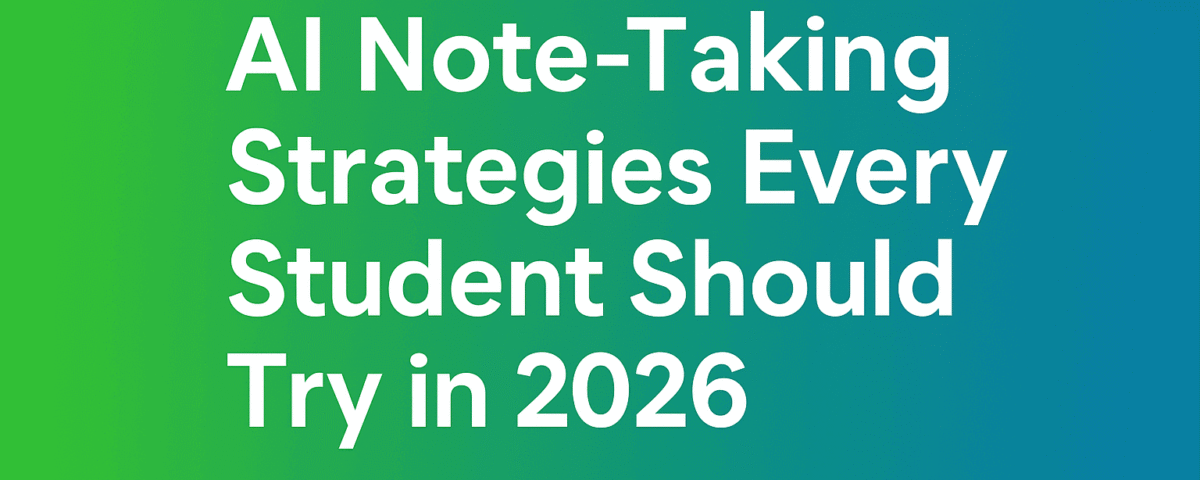AI jobs in 2025 are growing fast in the US. New products ship every week, and teams need people who can ship real features, not just talk about them. If you can show proof of work, you can stand out.
This guide covers the top roles, skills to learn, and salary ranges you can expect. You will see what these jobs do day to day, which industries are hiring, and how to build a portfolio that gets interviews. Demand is hot for titles like AI Engineer and Prompt Engineer, and hiring managers care about results you can show. Expect practical steps, current details, and a clear plan you can follow.
AI Jobs in 2025: What They Are and Where the Work Is in the US

Artificial Intelligence jobs in 2025 center on building real products, not just publishing papers. The roles below ship models, wire data, and keep systems stable and safe at scale.
- Research Scientist: Designs novel models, tests new training ideas, writes papers, and prototypes with large datasets. Works in research labs and advanced product groups. Typical output includes model architectures and pretraining methods that later feed into features.
- Machine Learning Engineer: Trains and tunes models, builds data pipelines, writes serving code, and measures live performance. Works on product teams and data platforms. Ships ranking systems, recommendations, and forecasting.
- AI Engineer: Integrates foundation models for Generative AI into apps, builds copilots, crafts prompts, and adds guardrails. Works in product engineering. Delivers chat features, summarization, search, and workflow automations.
- Robotics Software Engineer: Writes control and perception code, fuses sensor data, and tests in simulation and on hardware. Works in robotics groups and factories. Builds pick-and-place, navigation, and inspection systems.
- Algorithm Specialist: Designs fast, reliable algorithms for planning, optimization, or vision. Works across embedded, robotics, and finance. Improves speed, accuracy, and cost.
- AI Architect: Sets model, data, and infra patterns, chooses platforms, and enforces governance. Works across platform and security. Unblocks scale and reliability.
- Senior Data Scientist (AI focus): Frames problems, defines metrics, runs experiments, and productionizes models with engineering partners. Works on product and analytics teams. Turns business targets into measurable wins as a Data Scientist.
AI Jobs and Average Salary Expectations in 2025 (US and UK)
Here is a quick pay snapshot for core AI roles in 2025.
- US total compensation for many AI roles: about $160,000 to $245,000+, with equity and bonuses common. Top researchers can pass $1,000,000 with incentives at major labs and big tech.
- UK trends: Robotics Engineers grew fastest, up 51.7%, with pay around £52,779. Algorithm Specialists average about £100,634, though growth has been slower. Source: Report on top-paying emerging AI jobs.
- Entry-level AI Engineer pay is leveling, but remains strong due to steady demand for productized AI.
- Roles blending MLOps, data platform, and product integration often command higher bands.
Pay shifts by location, company size, and skill depth, so ranges vary across cities and sectors. For broader market context, see the LSE overview of in-demand tech careers.
Where the AI Jobs Are: Industries and Teams Hiring Now
AI Jobs are growing across mature and regulated sectors, not just in software.
- Healthcare: clinical decision support, imaging analysis, patient triage.
- Finance: risk scoring, trading signals, fraud detection, customer support.
- Government: public services, defense analytics, procurement, and cybersecurity.
- Big tech and startups: copilots, search, personalization, safety systems.
- Robotics and manufacturing: automation, quality control, predictive maintenance.
Common teams hiring include research, product engineering, data platform, MLOps, and robotics software. Many roles offer remote options. Some companies hire in emerging markets to expand talent pipelines and manage costs. For a data-backed view of hiring momentum, the PwC Global AI Jobs Barometer tracks where AI is creating new roles and boosting productivity, including a hiring companies list.
Skills You Need to Land AI Jobs in 2025

Hiring managers requirements demand proof you can build, measure, and ship. Use this skills roadmap to target AI Jobs with confidence. For market context, see IBM’s guide to AI skills for 2025.
The Core Tech Stack Hiring Managers Expect
Start with the Python programming language, then add C/C++ when performance matters. Learn NumPy, pandas, and scikit-learn for Machine Learning on tabular data. Pick one deep learning framework, PyTorch or TensorFlow, and get fluent in it. Work in Jupyter for analysis, and track everything with Git/GitHub.
Handle data with SQL, and get comfortable with Linux basics. Learn simple cloud: object storage like S3 or GCS, and plain compute instances. You will ship more if you can move files, train on a VM, and read logs without help.
Know the data science foundations: the math that shows up in code, including vectors, matrices, gradients, and how loss functions change during training. Keep formulas simple, focus on how they affect model behavior and tuning. This stack gets you productive on day one.
- Must-haves: Python, SQL, Git, PyTorch or TensorFlow, Jupyter
- Good-to-know: Linux CLI, S3 or GCS, compute instances, basic Docker
Portfolio Projects That Get Interviews
Three focused projects beat a crowded repo. Ship these:
- A clean tabular ML model with clear metrics, strong baseline, and a tight README. Include data steps, features, and an error analysis.
- A small deep learning app for images, relevant to skills needed by a Computer Vision Engineer, or Natural Language Processing (NLP). Add a simple demo (CLI, Streamlit, or notebook) that proves the model behaves well.
- An end-to-end pipeline that pulls data, trains a model, and serves predictions via a basic API or notebook. Log runs and track costs.
Post code on GitHub, write short project pages, and show real impact like accuracy lift, time saved, or dollars saved. For role expectations by path, scan Coursera’s overview of AI jobs to consider in 2025.
AI Salaries in 2025: What to Expect and Why Pay Varies
Pay in AI Jobs comes from three parts: base, bonus, and equity. Base is your fixed salary. Bonus is tied to performance or company results. Equity is stock or options that can grow over time. Strong offers balance all three, not just base.
In the US, average salary expectations for many in-demand roles are about $160,000 to $245,000+ in total compensation. Top researchers can see far higher packages at major labs and big tech. Artificial Intelligence skills still command about a 21% pay premium across roles, which holds even as hiring gets more disciplined. UK ranges vary by role and sector, with a clear spread between junior and senior bands, as shown in this review of AI salaries in the UK.
Pay varies for clear reasons. Seniority, skill depth, and advanced education like a Master’s degree in AI drive bands. Company stage matters, since startups skew toward equity while large firms pay richer base and bonus. Regulated industries and profit centers often pay more due to risk and impact. Location and remote policy shape offers, and global hiring can widen bands, as seen in cross-region pay for AI engineers in 2025 US vs Europe vs Latin America. Proven impact moves numbers the most, such as shipped systems, cost saves, or revenue lift.
Pay for entry-level jobs is leveling somewhat but remains strong. Employers want proof of real work, beyond just the Bachelor’s degree requirement or certificates. Bring projects and clear metrics to defend the high end of your range.
Pay Factors You Can Control for Salaries and Compensation: Skills, Impact, and Location
Push your range with focused moves. Master Python and one deep learning framework, PyTorch or TensorFlow, then show speed and reliability in production. Build proof with projects that have clear metrics, like accuracy lift or dollars saved. Choose a niche with strong demand, such as robotics, healthcare ML, or risk models in finance.
Target firms and cities with real budgets. Bay Area, New York, Seattle, London, and high-growth hubs tend to pay more. Use remote roles to widen your options and shop competing offers. Track your wins in a simple, quantified brag sheet. Keep it tight and measurable: problem, action, result. This proof lets you ask for the top of band with confidence.
- Core stack: Python, SQL, PyTorch or TensorFlow
- Proof: shipped features, cost cuts, revenue lift
- Strategy: budgeted markets, remote flexibility, niche expertise
Salary Negotiation for AI Jobs: Simple Scripts That Work
Use a clear, polite script and back it with proof. Example:
“Thanks for the offer. I am excited about the role and my background aligns well with your needs. I have shipped systems that cut inference cost 28% and improved model AUC by 4 points. Based on recent market data and my impact, I am targeting a total comp in the upper range, around $230,000 to $250,000. Can we explore moving the offer to that range?”
Bring evidence to the call:
- Competing offers or late-stage processes
- Public ranges from postings
- Portfolio results with metrics
Ask about total comp, not just base: equity refresh, signing bonus, annual bonus targets, and review cadence. If budget is fixed, trade for a signing bonus, higher equity, or an earlier review. Stay friendly, pause after your ask, and let the recruiter respond.
Your 90-Day Plan to Get an AI Job
Use this upskilling and training program to build skills, ship proof, and target AI Jobs with confidence.
30-60-90 Day Roadmap With Starter Resources

Commit 8 to 12 hours per week. Post weekly progress on LinkedIn to keep momentum.
- Days 1 to 30: refresh Python, core stats, and scikit-learn, reviewing concepts fundamental to a Computer Science degree. Finish one small tabular ML project with a clear baseline and metric. Try this step-by-step starter, Your First Machine Learning Project in Python. For quick syntax checks, use W3Schools Python ML.
- Days 31 to 60: learn deep learning basics in PyTorch or TensorFlow, then build a second project in vision or NLP. Add object storage (S3 or GCS) and a simple Streamlit or FastAPI demo. Pull ideas from Kaggle and Papers With Code.
- Days 61 to 90: polish your repo and README, write a short blog post per project, and record a 2-minute demo. Ship a final end-to-end project with training, eval, and a basic API. Before finalizing your targeted roles, check BLS employment projection data for growth opportunities. Apply to 10 to 15 entry-level jobs weekly, with tailored notes to hiring managers.
Keep a simple tracker: date, hours, task, result, link. Consistency beats long weekends.
Resume, LinkedIn, and Interview Tips for AI Roles
Make your resume scannable. Use tight bullets with action and results: “Built X, cut cost Y%, improved F1 by Z.” Put skills up top, then projects with links and metrics. Highlight transferable skills from related roles like Data Engineer. Keep it to one page if you have under 8 years. Consider career ladder reshaping through paths like internal transfers from software or data roles into AI.
On LinkedIn, use a clear headline like “AI Engineer | Python, PyTorch, MLOps.” List tools, top projects, and pin demos. Share weekly progress posts and short learnings to show consistency.
For interviews, practice Python fluency, ML basics, model evaluation, and simple system design. Focus on behavioral skills for AI with STAR for behavioral answers. Bring a portfolio walkthrough: problem, dataset, baseline, model choice, eval, error analysis, and a quick demo. Close with a crisp “what I would improve next” to signal ownership and depth.
Conclusion
Artificial Intelligence jobs in 2025, or AI jobs 2025, are clear and attainable. You now have the map, roles that build and ship, must-have skills, and realistic US and UK pay. Focus on Python, one Machine Learning framework, data basics, and proof you can deliver. Employers pay for impact, and AI skills carry a strong pay premium across healthcare, finance, government, tech, and robotics.
Pick one role today, Machine Learning Engineer, AI Engineer, or Data Scientist. Start one focused project this week that shows metrics, a clean README, and a short demo. Keep it simple, track results, and share progress on LinkedIn to build momentum.
Your next step is straightforward. Choose your role, start the project, and post your first update within seven days. Questions or wins to share, add them in the comments and help others learn. Take action now and move closer to the AI job you want.







[…] guide shows you how to find and land AI jobs from anywhere. You will learn what counts as remote, which roles pay well, the skills to build, […]